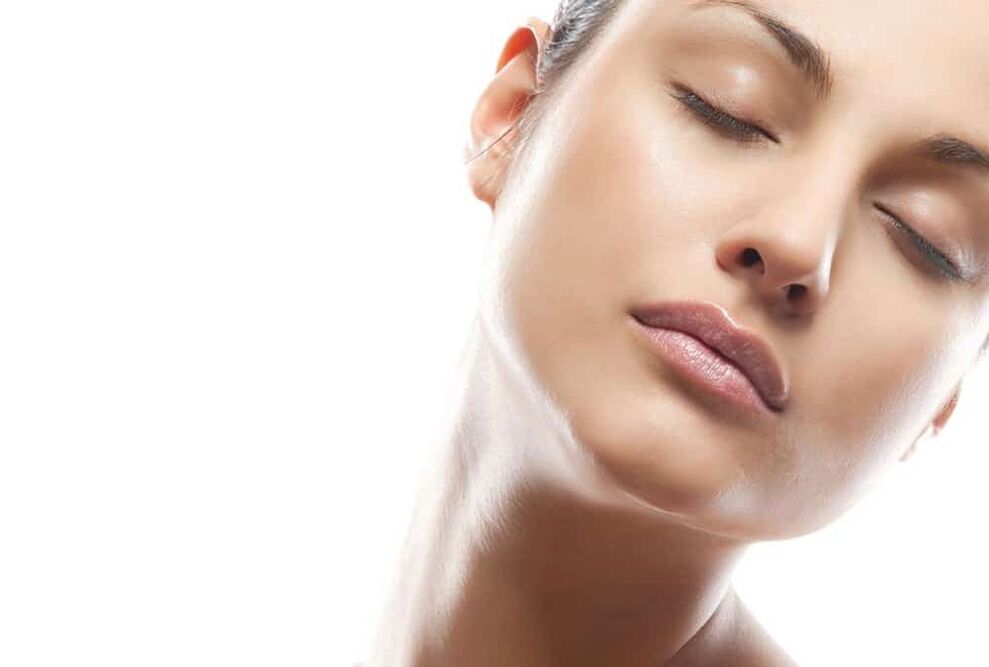
For rejuvenation, CO2 (carbon dioxide) and erbium lasers are used, the radiation of which is absorbed predominantly by water. They differ from each other in wavelength and degree of energy absorption, which determines the technology of the procedure. CO-2 devices are used for ablative rejuvenation and erbium devices for non-ablatives.
With ablative rejuvenation, the laser beam acts not only on the deep layers of the skin, but also on the superficial ones. With non-ablative: the laser penetrates deep into the tissue, but does not damage the surface of the skin. This is possible due to the different wavelengths of lasers, as well as the fact that the epidermis contains less water (10-15%) than the deep layers of the skin (70-75%).
Carbon dioxide lasers have the longest wavelength of all available medical lasers at 10, 600 nm. These rays are very well absorbed by water, so they react even with the small amount of water contained in the epidermis. Therefore, ablative techniques are performed with the help of this type of lasers, capable of affecting the superficial layer of the skin.
The wavelengths of the erbium laser range between 1064 and 2940 nm. Clinics use the Palomar Lux 1540 laser, whose wavelength is 1540 nm and the depth of penetration into the tissues is up to 2 mm. These rays are less absorbed by water and, therefore, pass through the epidermis without damaging it. The action of the laser begins already in deep layers, where there are enough water molecules to interact with the beam. Palomar Lux 1540 is used for fractional photothermolysis.
Why is laser resurfacing a safe and effective procedure?
Modern CO2 and erbium lasers act fractionally, that is, the beam is subdivided into grid-shaped microbeams. Due to this, only 20% of the surface is damaged, and the recovery process begins on the entire volume of the skin. This effect minimizes the possibility of heat damage, unpleasant consequences in the form of scars and scars, and also increases the rate of tissue repair.
As a result of the action of the laser, a coagulation column is formed, in the case of ablative - open, non-ablative - closed technology. These columns are located at some distance from each other due to fractional action. The cells around the clotting zone undergo a heat shock, which activates metabolic processes and the production of new cells. Thanks to this, a lifting effect is achieved, the skin is rejuvenated.
Who is ablative rejuvenation suitable for?
Ablative rejuvenation is a very effective method of solving problems such as superficial wrinkles, pigmentation, and decreased elasticity and firmness of the skin.
The laser acts mainly in the upper layers of the dermis, it does not penetrate deeply, but affects the superficial layer. Thanks to this, the skin is renewed throughout the depth of penetration of the ray (up to 1 mm) and the obvious correction of superficial imperfections. To achieve a good effect, only 1 procedure is required. The recovery period after the procedure is 5-7 days.
Ablative rejuvenation, particularly DOT therapy, is suitable for those who wish to obtain a quick result with a minimum period of rehabilitation.
Who is non-ablative rejuvenation suitable for?
Non-ablative rejuvenation is also one of the most effective techniques for removing wrinkles, lifting skin, rejuvenating, improving skin quality, treating pigmentation and other skin blemishes.
Laser operation only in the deep layers leads to the fact that the rehabilitation period after the procedure is practically absent and is only 2-3 days. To achieve a result similar to ablative rejuvenation, a greater number of procedures will be required, usually 3 to 4. Due to a deeper penetration, a complete restructuring of the tissues occurs, which gives a remarkable lifting effect.
Non-ablative rejuvenation, in particular fractional photothermolysis, is suitable for those who wish to obtain a remarkable result without intensive exposure and a period of rehabilitation.
























































